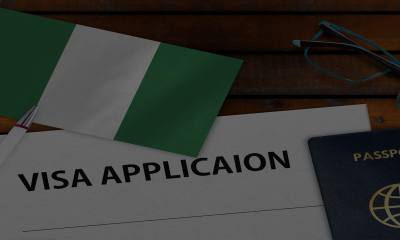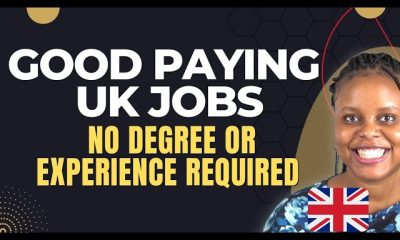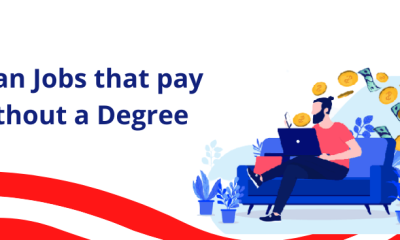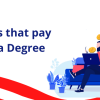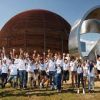Jobs
Work and Study Opportunities in the U.S.: Grab the Opportunity Now
The United States has long been a sought-after destination for international students, offering world-class education and diverse career opportunities. For many students, the ability to work while studying is crucial—not only to offset living expenses but also to gain valuable work experience. Fortunately, the U.S. offers various programs and pathways that allow international students to do both. In this post, we’ll explore the opportunities that enable you to work and study in the U.S., how to get started, and what to expect from these experiences.
Work and Study Opportunities in the U.S.
1. F-1 Visa with On-Campus Employment
The F-1 visa is the most common visa for international students in the U.S. It allows you to enroll in a full-time degree program at a U.S. educational institution. One of the key benefits of the F-1 visa is the ability to work on-campus while studying.
Opportunities:
- On-Campus Jobs: As an F-1 student, you can work up to 20 hours per week during the academic year and full-time during breaks (summer, winter). Typical on-campus jobs include working at the university library, dining halls, or in administrative offices.
- Research Assistantships and Teaching Assistantships: If you’re pursuing graduate studies, research and teaching assistantships offer more specialized roles with higher pay. These roles often come with tuition waivers or stipends.
Benefits:
- On-campus jobs offer flexibility and are close to your classes, making them convenient.
- Assistantships provide valuable academic experience, helping you build a network within your field of study.
2. Curricular Practical Training (CPT)
Curricular Practical Training (CPT) is another opportunity available to F-1 visa holders. This program allows students to gain work experience that is directly related to their academic program, often through internships or cooperative education programs.
How CPT Works:
- Paid or Unpaid Internships: CPT can be used for paid or unpaid internships, allowing you to gain professional experience in your field while earning an income.
- Eligibility: To qualify for CPT, you must have completed one full academic year (9 months) at a U.S. institution. Your CPT employment must be directly related to your field of study.
- Full-Time or Part-Time: You can work part-time during the academic year (up to 20 hours per week) and full-time during breaks or if your academic program allows it.
Benefits:
- CPT gives you the chance to apply classroom knowledge in a real-world setting.
- It provides invaluable work experience that can make you more competitive in the U.S. job market after graduation.
3. Optional Practical Training (OPT)
OPT is a popular work option for international students after completing their degree. It allows F-1 visa holders to work in their field of study for up to 12 months. If you are in a STEM (Science, Technology, Engineering, Mathematics) field, you may qualify for an additional 24-month extension, bringing the total to 36 months.
How OPT Works:
- Pre-Completion OPT: This allows you to work while still studying, but the hours you work will count against your post-graduation OPT time. Pre-completion OPT is typically used during summer breaks or for part-time work during the academic year.
- Post-Completion OPT: Most students opt for this after completing their degree, giving them the flexibility to work full-time for up to 12 months (or 36 months for STEM fields) in a job related to their major.
Benefits:
- OPT allows you to gain full-time professional experience in the U.S. after graduation.
- For STEM graduates, the OPT extension gives more time to build a career, and it often leads to long-term employment opportunities.
4. J-1 Visa for Work and Study Programs
The J-1 visa is designed for cultural exchange programs, but it also offers opportunities for students and professionals to work and study in the U.S. This visa is commonly used by:
- Au Pairs: The J-1 visa allows individuals to live with an American family, care for their children, and take classes part-time at a U.S. institution.
- Interns and Trainees: This visa is also available for individuals seeking internships or professional training, allowing them to gain practical experience in their field while continuing their studies.
How J-1 Programs Work:
- Work-Study Balance: Depending on the specific program, you can balance part-time work with part-time study. Many internships offer professional growth, cultural experiences, and sometimes wages to cover living expenses.
- Au Pair Programs: These programs allow you to study while living with an American family, providing childcare in exchange for a stipend, room, and board.
Benefits:
- The J-1 visa programs focus on professional growth, personal development, and cultural exchange.
- Opportunities to study part-time while working full-time (or vice versa) provide flexibility depending on your program.
5. Graduate Assistantships (GA)
Graduate assistantships are a great way to work and study simultaneously in the U.S., especially if you’re pursuing a master’s or doctoral degree. Many universities offer assistantships that allow international students to work as teaching or research assistants in exchange for a tuition waiver or a stipend.
Types of Graduate Assistantships:
- Teaching Assistantships (TAs): TAs assist professors with teaching duties, grading, and managing classes. In exchange, TAs often receive tuition reimbursement and a stipend.
- Research Assistantships (RAs): RAs assist faculty members with academic research, helping to conduct studies, gather data, and publish findings.
Benefits:
- Assistantships can significantly reduce tuition costs while also providing a salary or stipend.
- These roles offer excellent academic and professional networking opportunities, particularly for those pursuing academic or research careers.
6. Exchange Visitor Programs (EVP)
Many U.S. universities have Exchange Visitor Programs that allow international students to work and study simultaneously. These programs are often part of larger cultural exchange efforts, which may include internships, summer work, or short-term study programs.
How EVP Works:
- Internships and Jobs: Many programs offer internships or short-term job placements that allow you to gain hands-on experience while taking courses.
- Short-Term Programs: Exchange programs can last anywhere from a few weeks to a year, depending on the arrangement between the home and host institutions.
Benefits:
- The exchange visitor program is a flexible option that allows for professional development and academic advancement in one package.
- You get to immerse yourself in American culture while gaining practical experience.
Which course is best for a job in the USA for foreigners?
The best course for a job in the USA for foreigners depends on several factors, including your existing skills, interests, and the specific job market you’re targeting.
Here are some popular fields that often offer opportunities for foreign workers:
- STEM Fields: Science, Technology, Engineering, and Mathematics degrees are highly sought after in the US. These fields often lead to well-paying jobs and visa sponsorship opportunities.
- Healthcare: Nursing, medical technology, and allied health professions are in high demand. Many healthcare institutions in the US employ foreign workers.
- Information Technology: IT professionals with skills in software development, cybersecurity, and network administration are in constant demand.
- Business and Finance: Degrees in business administration, finance, and accounting can open doors to various job opportunities in corporate America.
When choosing a course, consider the following;
- Job Market Demand: Research the current and projected demand for jobs in your chosen field.
- Visa Eligibility: Some fields may have specific visa requirements or limitations for foreign workers.
- Your Interests and Skills: Choose a field that aligns with your passions and strengths.
Remember that obtaining a job in the US as a foreigner can be competitive. It’s important to have strong academic credentials, relevant work experience, and a good command of the English language.
Conclusion:
Studying in the U.S. is an enriching experience that offers academic growth, cultural exchange, and career advancement. By taking advantage of programs like CPT, OPT, or graduate assistantships, you can work while studying and make the most of your time in the U.S.
Here’s a quick checklist to get started:
- Choose the Right Program: Before you apply for a visa, ensure that your chosen academic program or institution allows for work-study opportunities like CPT, OPT, or assistantships.
- Understand Visa Requirements: Different visas (F-1, J-1) have different restrictions and opportunities for work and study. Make sure you fully understand these before committing.
- Network Early: Seek out internships, research opportunities, and on-campus jobs early to maximize your experience and build connections in your field of interest.
With the right strategy and preparation, the U.S. can be a place where you not only earn a degree but also gain meaningful work experience that propels your career forward.

